Scones
This post may contain affiliate links. Read my full disclosure policy.
Say goodbye to dry, crumbly scones—a secret ingredient makes these light, tender and buttery!
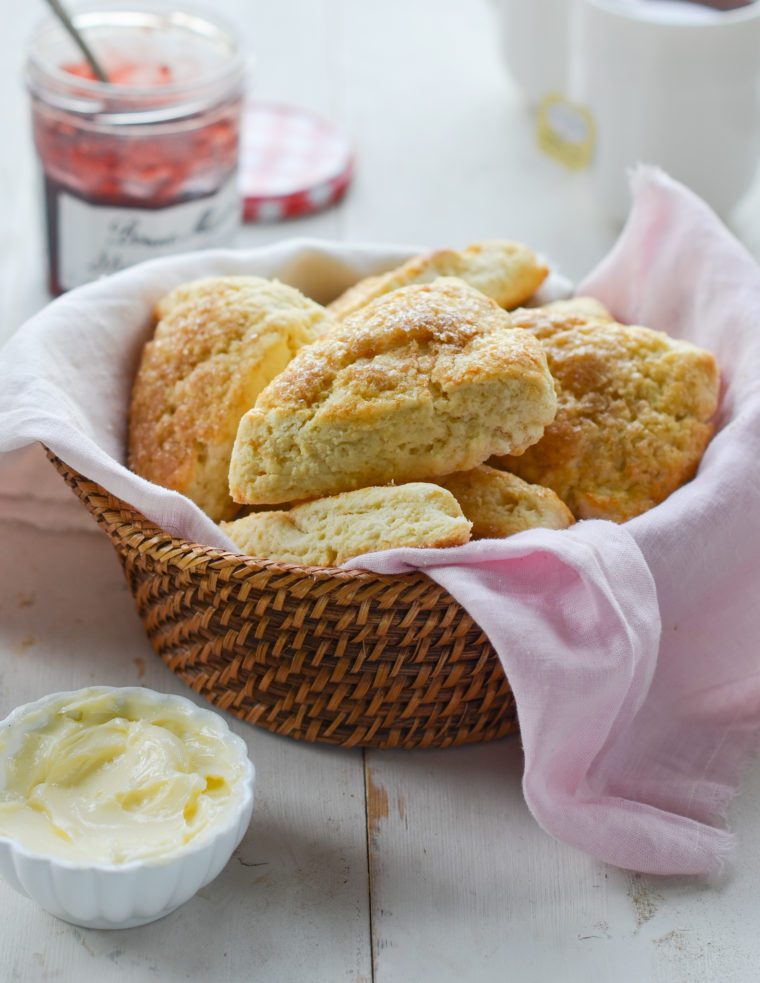
Similar to American biscuits, scones are a British teatime staple, often enjoyed with butter, jam, or clotted cream. They’re a favorite in American bakeries too, where they are often sweeter and dressed up with various mix-ins and frostings. However, all too often, instead of a buttery, flaky treat, scones are dry, leaving us with a lap full of crumbs and searching for the nearest cup of coffee! If that’s been your experience, I promise these light, tender, buttery scones will change your mind!
The secret is using cake flour instead of all-purpose flour. It’s lower in protein and makes for ultra-tender scones. If you don’t have any on hand, you can easily make your own using all-purpose flour and cornstarch (see the FAQs below). For a kid-friendly twist, don’t miss my chocolate chip scones.
Table of Contents
“After living in the U.K. for 5 years and enjoying their high tea I’ve been on the lookout for the perfect scone recipe…this is it!!”
What You’ll Need To Make Scones
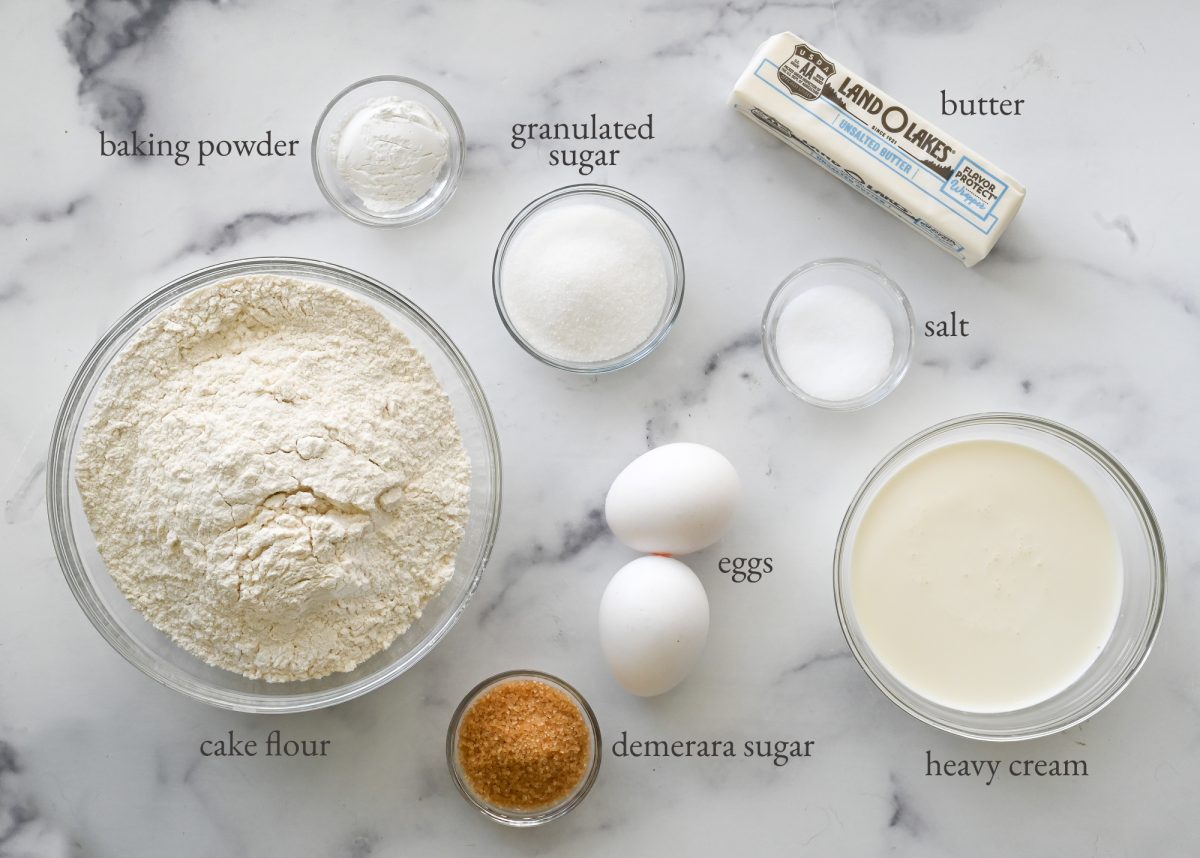
- Cake Flour: The base of the scones. Cake flour provides a softer, more delicate texture than all-purpose flour. Don’t have cake flour on hand? See the FAQs to see how to make your own cake flour using all-purpose flour and cornstarch.
- Baking Powder: Acts as a leavening agent, helping the scones rise and become light and fluffy.
- Sugar: Adds sweetness and enhances the flavor of the scones.
- Butter: Adds richness, flavor, and a tender crumb to the scones.
- Eggs: Provides structure to the dough and helps bind the ingredients together. Egg brushed on top of the dough gives the finished scones a beautiful golden color.
- Heavy Cream: Adds moisture, richness, and a creamy texture to the scones. Do not substitute light cream or milk.
- Demerara Sugar: (Also called raw or turbinado sugar) Adds a crunchy texture and caramelized sweetness to the scone tops, providing a delightful contrast to the tender interior.
- Jump to the printable recipe for precise measurements
Step-By-Step Instructions
Preheat the oven to 425°F and set an oven rack in the middle position. Line a baking sheet with parchment paper. In a large bowl, whisk together 2 cups cake flour, 2½ teaspoons baking powder, 2½ tablespoons granulated sugar, and a scant ¾ teaspoon salt.
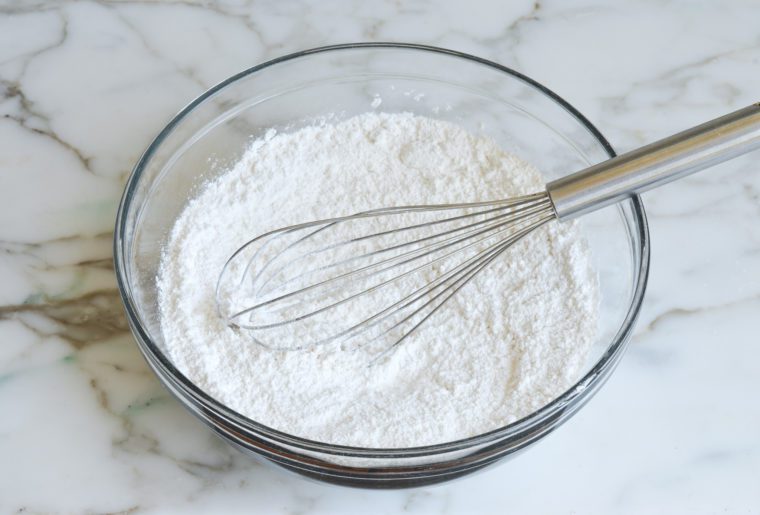
Add the cold butter, and cut into small pieces.
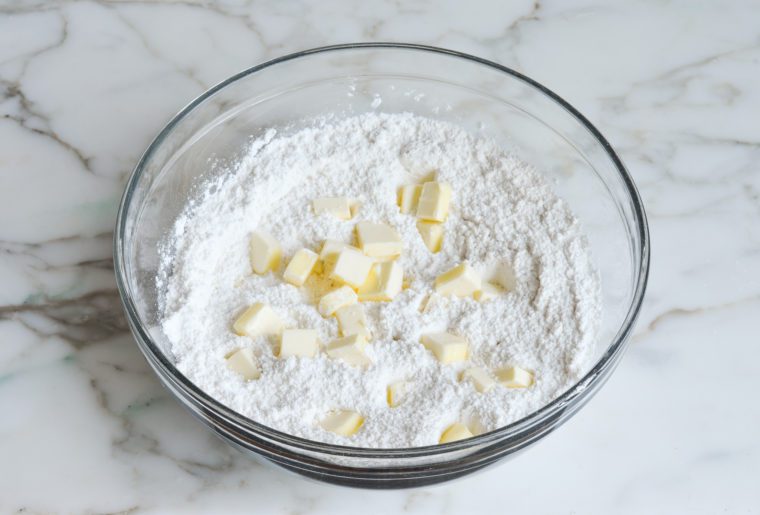
Use your fingertips to rub the butter into the dry ingredients until the mixture resembles coarse crumbs with pea-size clumps of butter within.
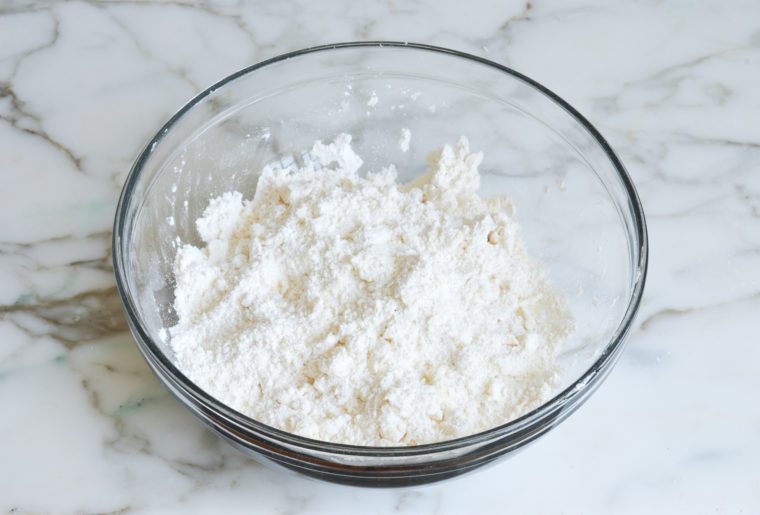
In a small bowl or liquid measuring cup, whisk together ⅔ cup heavy cream and 1 egg.
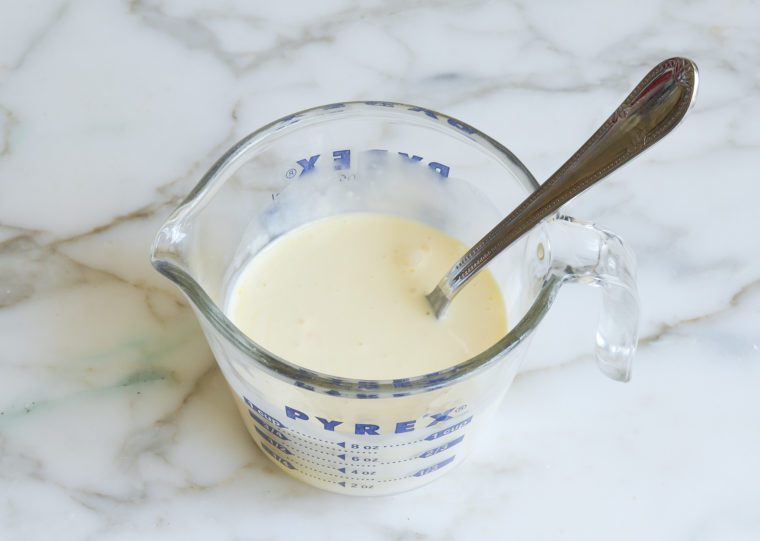
Make a well in center of dry ingredients, then pour the cream/egg mixture in.
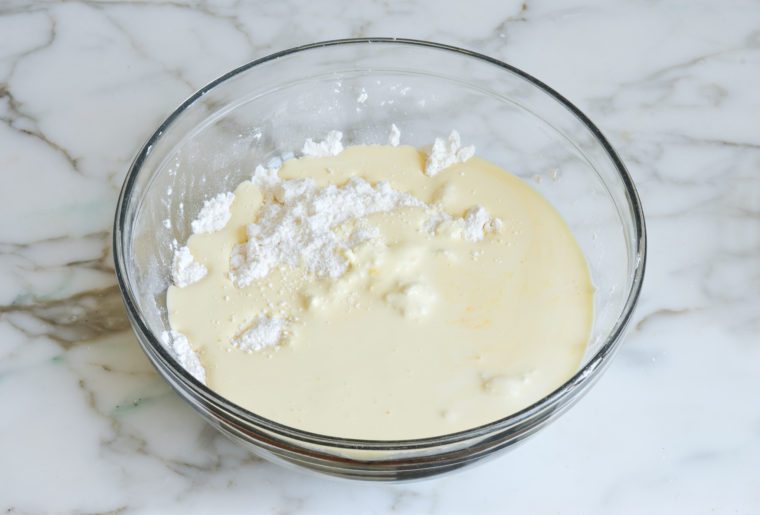
Use a rubber spatula to mix until the dough comes together into a mass. It should be a bit sticky but not so wet that you can’t handle it with your hands. If it seems dry, add the remaining 2 tablespoons of cream.
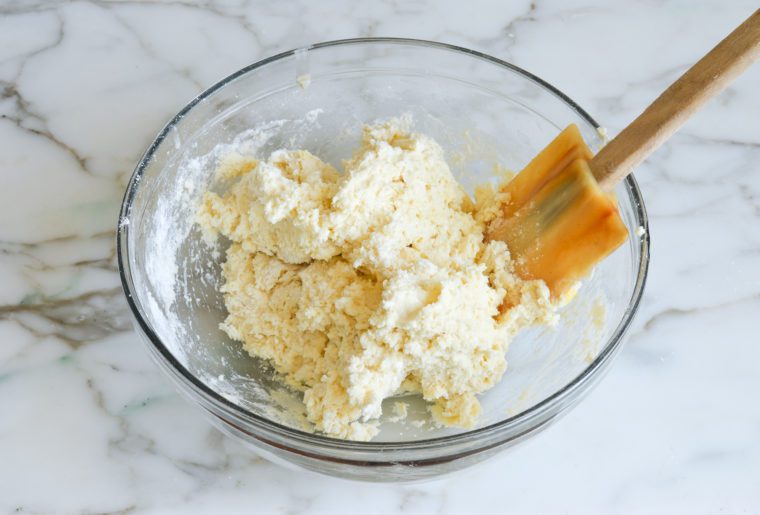
Dust a work surface lightly with flour, then dump the scone dough onto the surface.
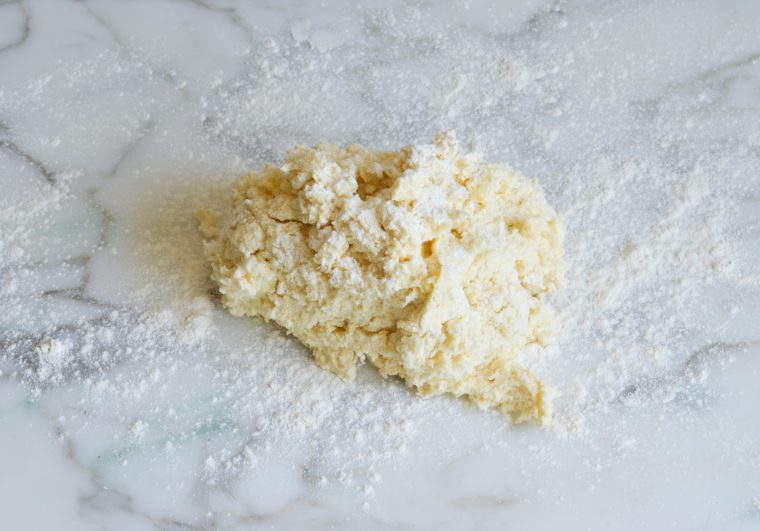
Knead very gently a few times until dough comes together into a ball. (Sprinkle more flour, little by little, if dough is too sticky to work with.) Press dough into a flat circle about 7 inches in diameter and ¾-inch thick.
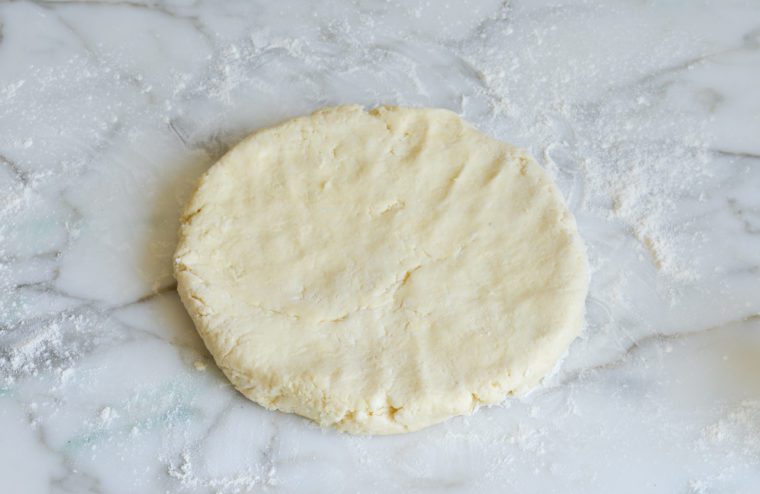
Use a sharp knife to cut into 8 triangles.
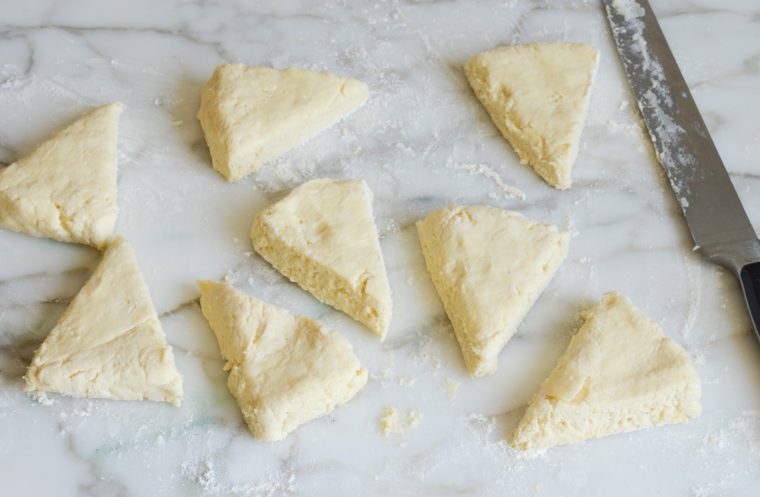
Transfer the wedges to the prepared baking sheet. Brush lightly with a beaten egg and sprinkle with about 1 tablespoon demerara sugar.
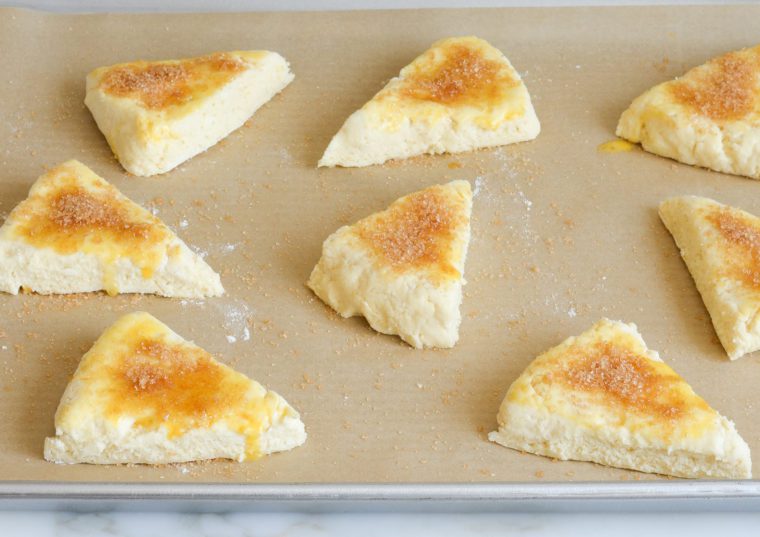
Bake for 10 to 12 minutes, until the tops are lightly golden and firm to the touch.
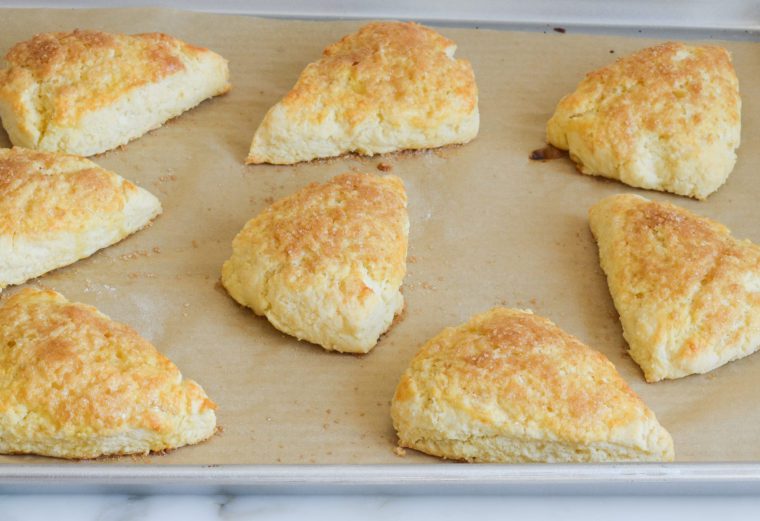
Serve warm from the oven.
Frequently Asked Questions
Cake flour is finer and lower in protein, which makes lighter and fluffier scones. If you don’t have any on hand, a simple blend of all-purpose flour and a bit of cornstarch makes a great substitute. Simply whisk together 1¾ cups all-purpose flour and ¼ cup cornstarch. This easy swap will take your scones from just okay to fantastic, giving them that perfectly tender, fluffy, ultra-buttery crumb. If you’d like some other options for using up cake flour, take your pick from cherry cornmeal upside-down cake to yellow cake with chocolate buttercream frosting to Boston cream pie.
Definitely! To freeze them before baking, place the raw scones on a baking sheet, let set in the freezer, then place in an airtight container and freeze for up to 3 months. Bake as needed directly from the freezer. (Wait until you’re ready to bake the scones to brush on the egg wash, and allow 1 to 2 minutes longer in the oven.) To freeze after baking, let the scones cool completely and store in an airtight container for up to 3 months. Before serving, remove the scones from the container and let them come to room temperature. (If you have the option to freeze the scones before or after baking them, you will get the best results if you freeze before baking.)
Demerara (also called raw or turbinado) sugar is a type of cane sugar with large, crunchy crystals and a slightly amber color. It has a natural caramel-like flavor and is often used to add texture and sweetness to the tops or exterior of baked goods like pecan shortbread cookies and butterscotch pecan scones. If you don’t have it on hand, you can substitute light or dark brown sugar, or simply omit it.

Video Tutorial
You May Also Like
Scones
Say goodbye to dry, crumbly scones—a secret ingredient makes these light, tender and buttery!
Ingredients
For The Dough
- 2 cups cake flour, spooned into measuring cup and leveled off (see note on substitution)
- 2½ teaspoons baking powder
- 2½ tablespoons sugar
- Scant ¾ teaspoon salt
- 1 stick (½ cup) cold unsalted butter, cut into ½-inch pieces
- 1 large egg
- ⅔ cup heavy cream (do not substitute milk or light cream), plus more if needed
For The Topping
- 1 large egg, beaten
- 1 tablespoon demerara sugar (also called raw sugar or turbinado; optional)
Instructions
- Preheat the oven to 425°F and set an oven rack in the middle position. Line a baking sheet with parchment paper.
- In a large bowl, whisk together the flour, salt, baking powder and granulated sugar. Add the pieces of cold butter. Using your fingertips, rub the butter into the dry ingredients until the mixture resembles coarse crumbs with pea-size clumps of butter within.
- In a small bowl or liquid measuring cup, whisk together the heavy cream and the egg. Make a well in center of dry ingredients, then pour the cream/egg mixture in. Using a rubber spatula, mix until the dough comes together into a mass. It should be a bit sticky but not so wet that you can't handle it with your hands. If it seems dry, add 1 to 2 tablespoons more cream.
- Dust a work surface lightly with flour, then dump the scone dough onto the surface; dust the dough with a bit of flour as well. Knead very gently a few times until the dough comes together into a ball. (Sprinkle more flour, little by little, if dough is too sticky to work with.) Press the dough into a flat circle about 7 inches in diameter and ¾-inch thick, then use a sharp knife to cut into 8 even triangles. Transfer the wedges to the prepared baking sheet. Brush lightly with the beaten egg and sprinkle with the demerara sugar, if using. Bake for 11 to 13 minutes, until the tops are lightly golden and firm to the touch. Serve warm from the oven.
- Note: If you don't have cake flour, you can make your own: simply whisk together 1¾ cups all-purpose flour and ¼ cup cornstarch.
- Freezer-Friendly Instructions: To freeze before baking, place the raw scones on a baking sheet, let set in the freezer, then place in an airtight container and freeze for up to 3 months. Bake as needed directly from the freezer. (Allow 1 to 2 minutes longer in the oven.) To freeze after baking, let the scones cool completely and store in an airtight container for up to 3 months. Before serving, remove the scones from the container and let them come to room temperature. (If you have the option to freeze the scones before or after baking them, you will get the best results if you freeze before baking.)
Nutrition Information
Powered by ![]()
- Per serving (8 servings)
- Serving size: 1 scone
- Calories: 322
- Fat: 20 g
- Saturated fat: 12 g
- Carbohydrates: 33 g
- Sugar: 6 g
- Fiber: 1 g
- Protein: 4 g
- Sodium: 188 mg
- Cholesterol: 76 mg
This website is written and produced for informational purposes only. I am not a certified nutritionist and the nutritional data on this site has not been evaluated or approved by a nutritionist or the Food and Drug Administration. Nutritional information is offered as a courtesy and should not be construed as a guarantee. The data is calculated through an online nutritional calculator, Edamam.com. Although I do my best to provide accurate nutritional information, these figures should be considered estimates only. Varying factors such as product types or brands purchased, natural fluctuations in fresh produce, and the way ingredients are processed change the effective nutritional information in any given recipe. Furthermore, different online calculators provide different results depending on their own nutrition fact sources and algorithms. To obtain the most accurate nutritional information in a given recipe, you should calculate the nutritional information with the actual ingredients used in your recipe, using your preferred nutrition calculator.

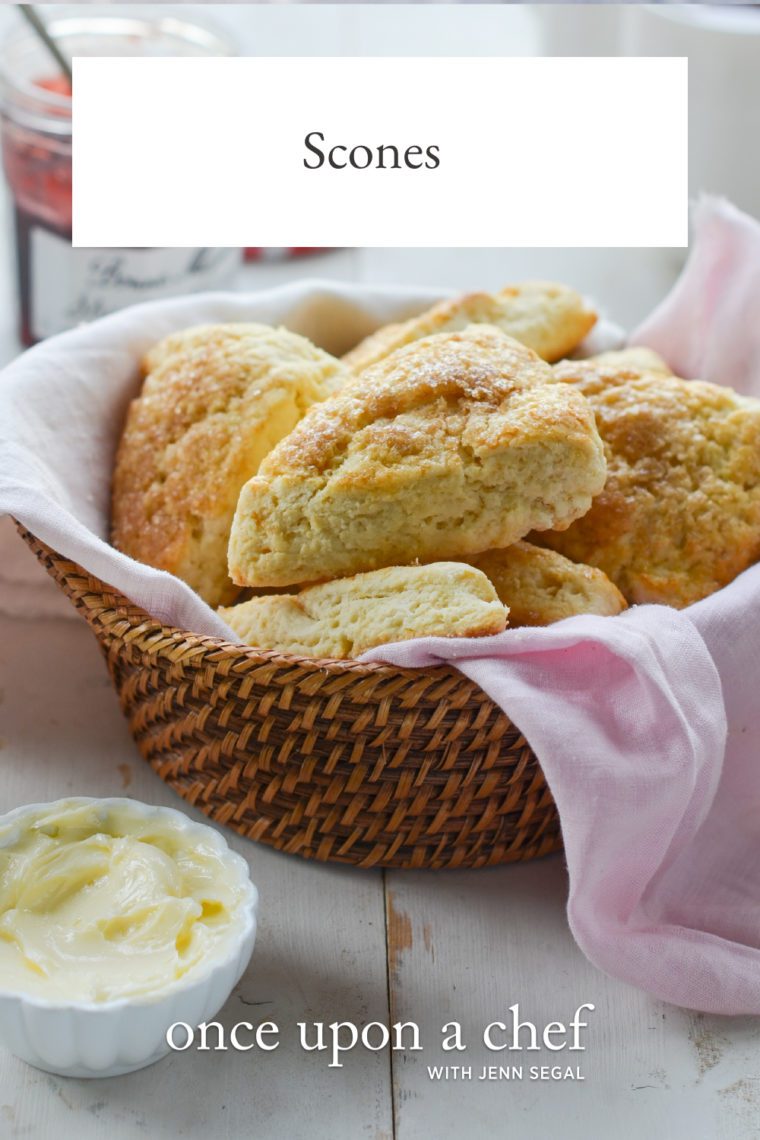
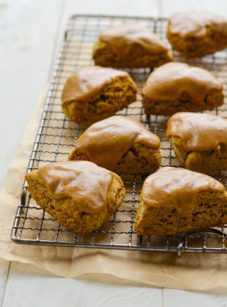
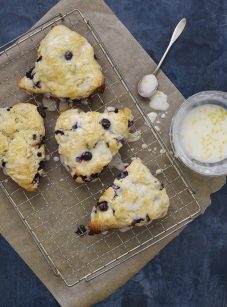
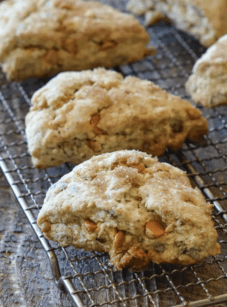
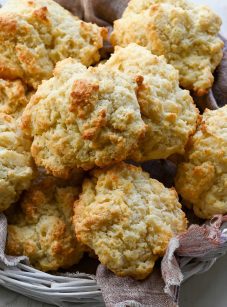
Hi Jenn,
I’ve made these as they are and they’re delicious. Would this recipe work baked as British scones are, cut out with a round cookie cutter and baked clustered together?
Thanks in advance 🙂
Hi Nicole, so glad you like these! Yes, I think what you’re describing would work. The bake time may be slightly longer so just keep an eye on them. I’d love to hear how they turn out!
Hi Jenn.. is this recipe okay to double or triple? Thanks, Nicole
Hi Nicole, that should be fine but beyond that, things can get lost in translation. Hope you enjoy!
Thanks Jenn for your reply. Yes I’ve heard it becomes tricky at a certain point. It’s a science I’ve yet to dabble in! Thanks again, love all of your recipes!
Great recipe. The first time I made these I did the recipe exactly as written. I had a friend visiting from out of town and we made two batches and added some extra goodies. One batch we added orange zest and cranberries. The other batch we made we added finely chopped fresh rosemary, some chopped dates, and some pinenuts. They were absolutely amazing. I plan on making scones often now as I can’t imagine not having this yummy goodness on a regular basis.
As advertised. Beautifully light scones. I nixed the sugar topping and instead mixed half rye flour and it still worked wonderfully. I usually have one or two leftover wedges. Not this time! This will easily become my staple scone recipe.
Made these today and I don’t think I’ll ever eat another store bought scone again! Delicious and light…not heavy like most store brands. I added grated lemon rind and juice from 1/2 a lemon. Absolutely wonderful! Love Once Upon A Chef!
Hey Jenn,
I must say this is by far the best scone recipe I have had the pleasure of baking but for some reason, the baking powder taste was overshadowing the experience. Any suggestions to remedy this?
Hi, Sorry to hear the baking powder overshadowed the taste of the scones. Do you think there’s any chance you mismeasured the baking powder (or anything else)?
Hi Jenn,
I wanted to make these and ship them out for my sister in Miami for her birthday.
Any tips?
Thanks
Hi Rani, Unfortunately, I don’t think scones are a great choice for shipping as they don’t stay fresh for very long. If you’d like to send baked goods to your sister for her birthday, some other options are any of my banana breads or biscotti, the Toffee Almond Sandies, or the Scottish Shortbread. Hope that helps!
Use Rumford baking powder no aluminum in it
The only baking powder to ever use
Absolutely best scone. I should have doubled the batch because they were devoured. Served with clotted cream and homemade strawberry jam.
I just tried these for the first time. Oh, my goodness! Light, tender, flakey, and delicious. I have been craving a cinnamon cream scone from a bakery in my old town, so I made a slight alteration to get closer to it. I added approximately 1/2 teaspoon of cinnamon and 1/2 teaspoon of vanilla extract to the mix. I added a slight dusting of cinnamon and regular sugar to the top along with the egg wash before baking. My husband says these are better than the ones we loved from the bakery! I also cooked only half, saving the other four with two each in freezer bags to cook later.
I made the plain scones once again for my children’s’ breakfast. As usual the disappeared almost before I sat down. This time, I experimented with 2/3 cup of craisins and a tablespoon of orange zest. And made them as minis this week. I think I like them even better small.
Question: your book has blueberry scone using all purpose flour…has this been updated to cake flour, too. It does make a difference. Thanks, Jenn, your recipes are my automatic go-to.
Hi Jenn,
Just got your book for Christmas- love it!!! ( was already a fan) I am trying to make your blueberry scones but can never seem to get the cold butter and flour mixture to mix right. Butter is to hard or soft… I’m useless doing this by hand which is why I always avoid making dough. I have a tiny food processor. Is that better then a standing mixer?
Jackie
Hi Jackie, so glad you liked the book! Sorry to hear you struggle with the butter/flour mixture. A food processor is definitely a better option than a stand mixer for that but not sure if you’ll be able to fit everything into your food processor. You may need to do it in a few smaller batches. Hope that helps and that you enjoy!
Can you add fruit, cranberries or blueberries to this recipe?
Hi Jim, I wouldn’t recommend adding fruit here but I do have a blueberry scone recipe from my first cookbook and a dried cranberry version in my upcoming cookbook. Email me at jennifer@onceuponachef.com if you want either of those recipes.